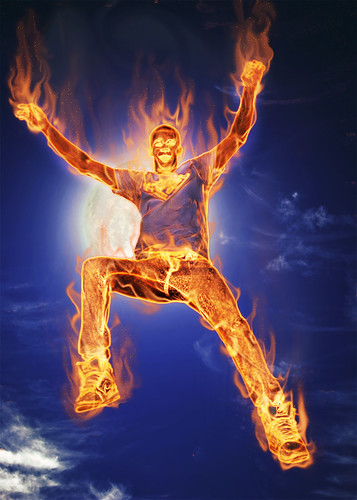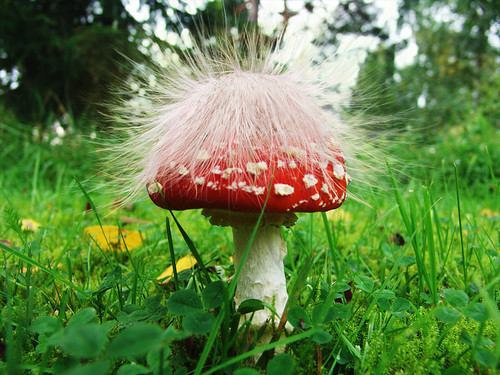Fair warning, this one is long so if you are in a hurry save it for another day. It's a subject I'm passionate about because it's one of the single biggest reasons for the successes I've enjoyed, not just in photography but in everything I've learned to do well.
I am surrounded by friends who constantly tell me that they love photography, and want to get better at it, but they don't know where to start. That is exactly where I was a couple of years ago. Here are some of the things I did to get rolling. They all continue to be crucial to my ongoing development.
1) Pay attention to what the photographers you admire are paying attention to. If you see a photograph you like on flickr look at all of the groups the photographer has posted the image to. Check out their contacts list. Follow every crumb trail of info they leave you to figure out who they have been hanging around with to end up where they are. If you find a blog you like, look at the blogger's profile and see which blogs they are following. Truly successful people in any venture are information sponges. Every great teacher is a conduit to other great teachers - Pay attention to what they are paying attention to then pay attention to it too!
2) Jump in the deep end and drown. Hurts like the dickens at first but it's the best way I know of to draw the hot looking photo-life-guards out of the woodwork for a little mouth-to-mouth resuscitation (that's not all bad). What I mean by that comment is enter some photo contests that are way out of your league and sincerely invite feedback. You are going to get killed, well, maybe not everyone but I sure do, and if you don't, you are entering the wrong contests because there is ALWAYS someone better. Always. When I do well in a contest it is usually because they didn't enter.
The goal here is not to get easy praise, it is to learn how to get better faster. Once you get your prized head shot handed back to you on a plate, find the forums section and go ask for more feedback.
This is the most obvious but least used method of getting a quality education I know of. Forget actually winning a contest, it's nice but fairly irrelevant to your success -
Look for opportunities to loose and LEARN so you can win at life!The contest forum, not the contest itself, is where you put the magic formula of success to work. There are exceptions but generally people don't like to hurt other people's feelings so they will hold back in their initial comments. You have to draw the truth out. Start with the question, "What can I do to make this picture better?" Then ask again in a different way. Ask specific questions. Ask questions about the answers. Don't get defensive... ever... for any reason. It's like shutting off the valve of wisdom.
You will get some feedback from amateurs trying to help with what they know; These folks are like the crowd standing around the drowning guy shouting helpful things like, "Dude, breathe!" You might also get a few people hiding their own insecurities behind a hurtful remark or two; These are like the slightly less helpful people who keep slapping the drowning guy in the face while shouting, "Dude wake up!" (side note) Yea, thanks, I can see you're a pro and all but have you noticed that the guy's not responding very positively here? If that's all you've got just leave them alone - seriously.
Dweeb... (Ok, back to our regularly scheduled drama) Just keep laying there asking for help and sooner or later you are going to find somebody that knows what they are talking about and are willing to help you out. They are easy to spot. Suddenly, out of the crowd the photographer you've always dreamed of will emerge, glorious beads of wisdom dripping from their tight portfolios as beams of light glisten on their trophy laden stats... AWHHHHHHHhhhhh! Salvation has come - Pucker up baby!
Fair warning, mouth-to-mouth isn't all it's cracked up to be. They never seem to kiss my bruised ego and make me feel better but they almost always offer some honest insight that breathes new life into my photos. Again, pay attention and don't take ANY of the criticism personally, not even from the first crowd. Did I already say don't get defensive? Don't get defensive.
Here are a couple of contests to get you started:
http://www.worth1000.com/http://jasondmoore.com/blog/contests/ Jason occasionally reviews images from his readers too, a gift I still need to take advantage of myself.
And when you are ready...
http://www.dpchallenge.com/ I'm not. (Ok, I know, Off the deep end right? Soon... maybe)
3) Dig, dig, dig, then invest and SHOW thanks, don't just SAY thanks. You almost never find gold lying around on the surface but I promise you, someone is holding some gold that you want. Here is the secret to convince them to give it to you.
If someone takes the time to give you high quality feedback take the time to put it to work. Re-shoot the image using their advice then go back and post the improvements to the thread as a way of thanking them for investing in you.
This is one of the single most important things you can do to get a team of the brightest talent to start pouring themselves into you. If they can see that you are serious, that they have helped you improve, and that you appreciate it, there is this little nuclear teacher trigger that goes off in their brain. They will move heaven and earth to make sure you keep getting their best stuff.
Here is an example of where I put this principle to work on a photo manipulation:
Chopped Pepper Feedback. This image was probably the biggest disappointment in my contest entry history. I knew from experience that meant that it had tremendous potential for growth so I swallowed my pride and trotted it over to the forums for a work-up. Notice how the thread started with a few pats on the back and some modestly helpful advice, then check out what happened when I put these principles to work. Master's of the craft end up spending a lot of time writing and illustrating custom tutorials just for lil-ole-nobody-me. I learned more about reflections and shadows from getting killed in that contest than anything I've ever studied in my life but I had to dig for it, then show my teachers that I appreciated them enough to put their advice to work. MAGIC! Works every time.
Incidentally, the link to the improved image is no longer working in that thread. If you are interested you can see the improvements I made
here.
4) Never, ever, ever go to bed until you have learned at least one new thing, even if it's nothing more than a better way to blow your nose (I'm sure there is a web site). Learn how to learn. Everything after that is a cakewalk.
5) Teach what you find out to somebody else. Don't be a know-it-all but challenge yourself to learn what you want to know well enough to pass it on. If you can't explain it to others in a way that is easy to understand then you probably haven't learned it yet. If you find the rare jewel of a student using the principles in #3, that's a good place to poor your efforts. Incidentally, if you happen to be one of those students you'll discover that somehow you end up magically surrounded by them as you grow. Those students will help you draw stuff out of yourself that you didn't know was in there so they too become some of your greatest teachers. Treat them accordingly.
6) Notice a pattern here? Learn from everyone. I have yet to meet a person that was unable or unwilling to teach me something worth learning if I approached them in the right way. The right way is really simple. It's genuine respect for who they are and what they have to offer and you can't fake it. If you simply learn the art of convincing them to open their hand to you then you very well may become the greatest photographer (insert occupation of choice here) in the history of the world. It really is that simple.
If all of that fails then you can always do the other thing I did... Learn Photoshop well enough to hide your lack of skills with a camera... but keep learning the camera anyway. :-) Happy shooting!
















